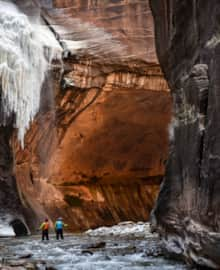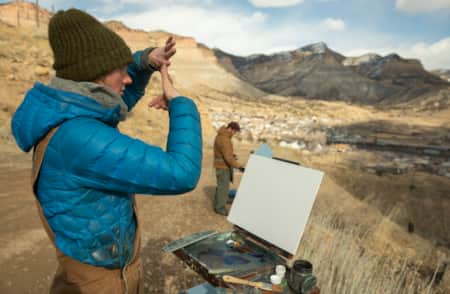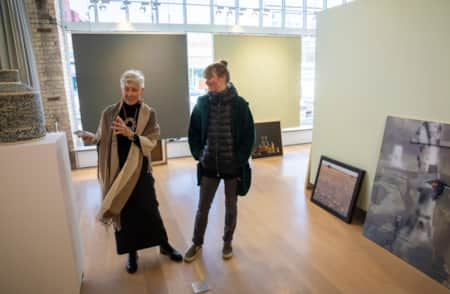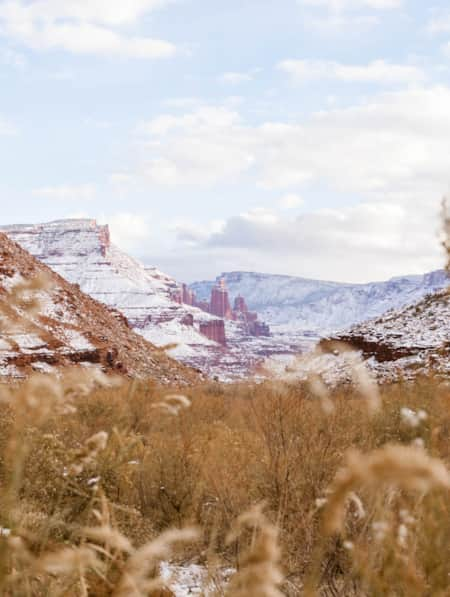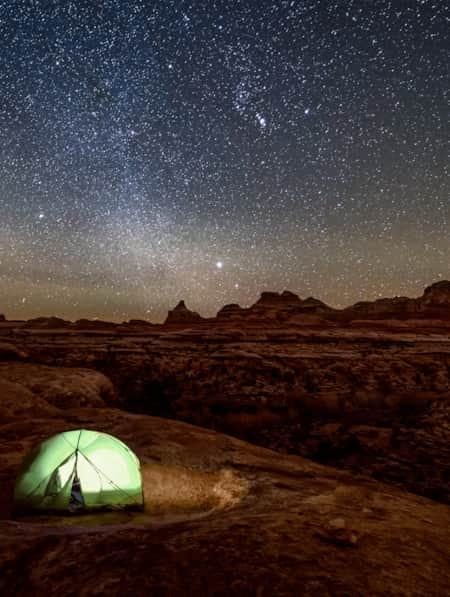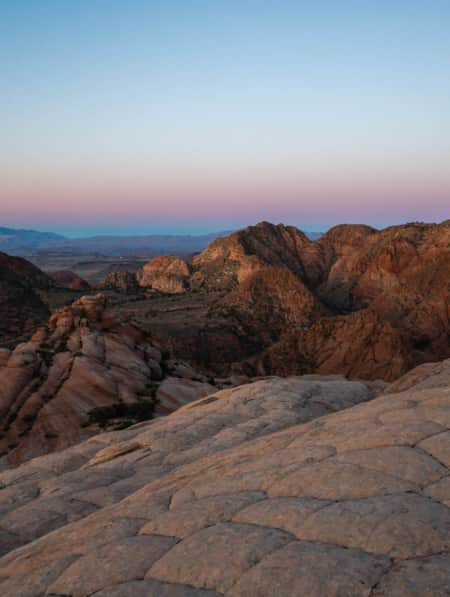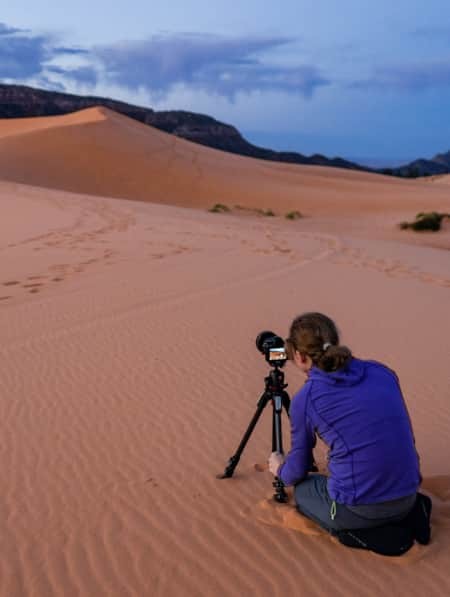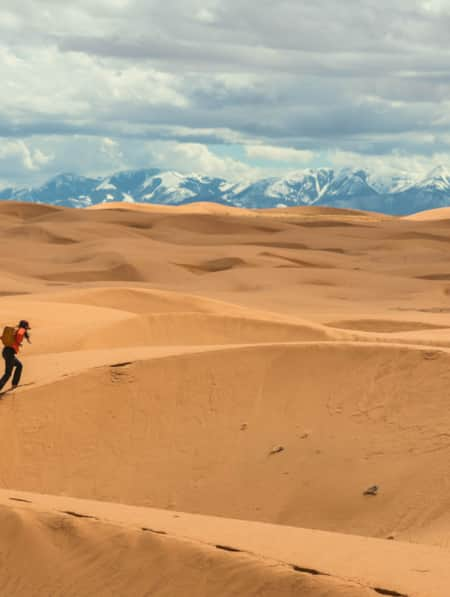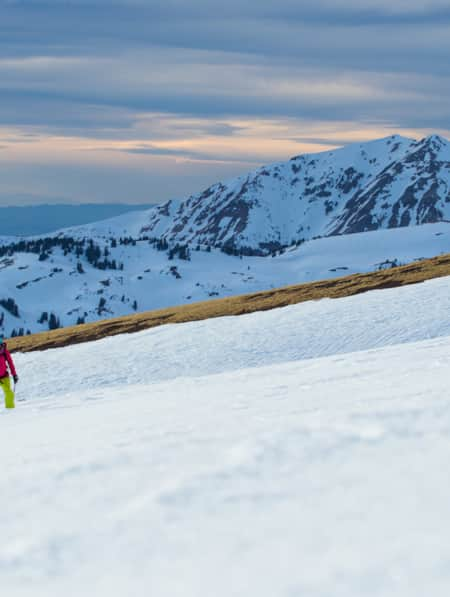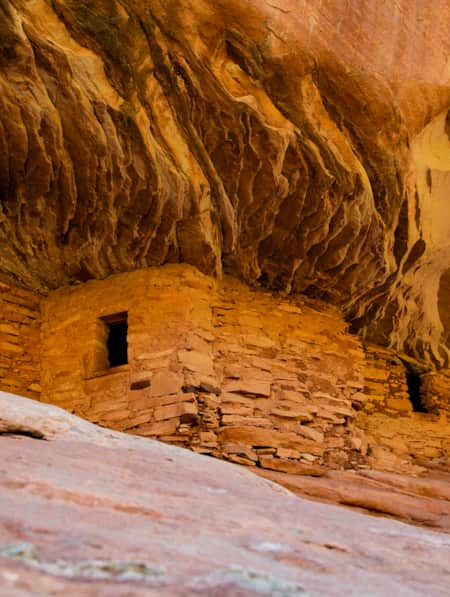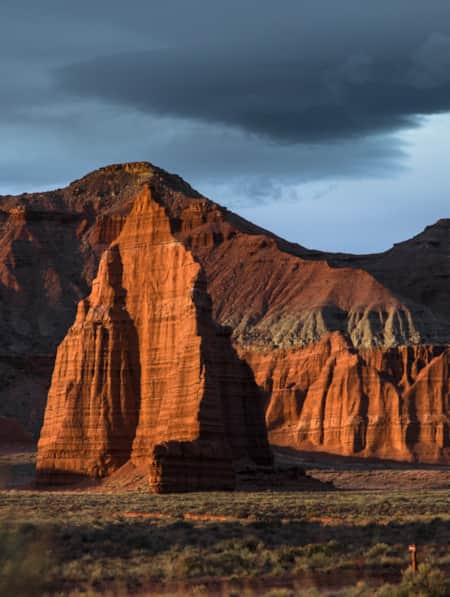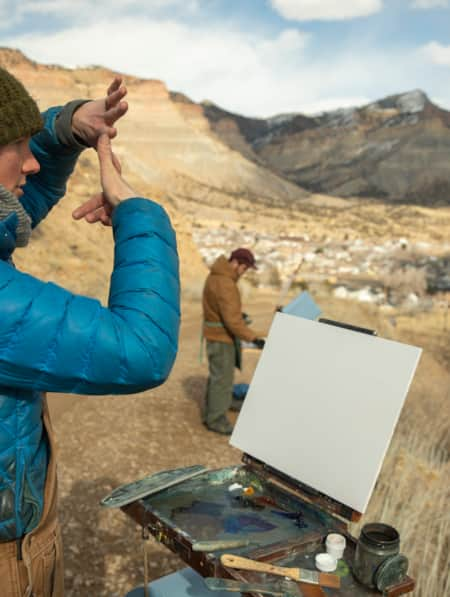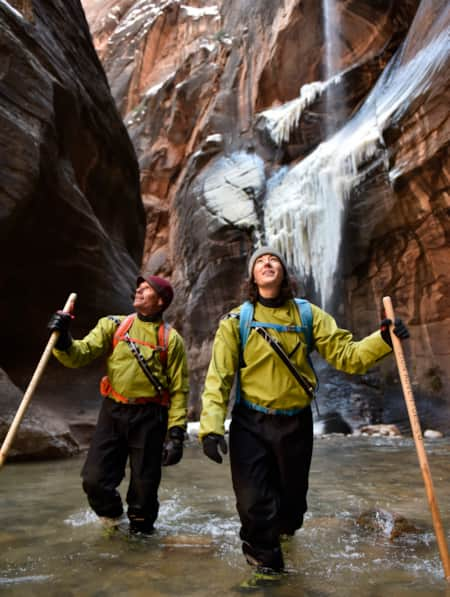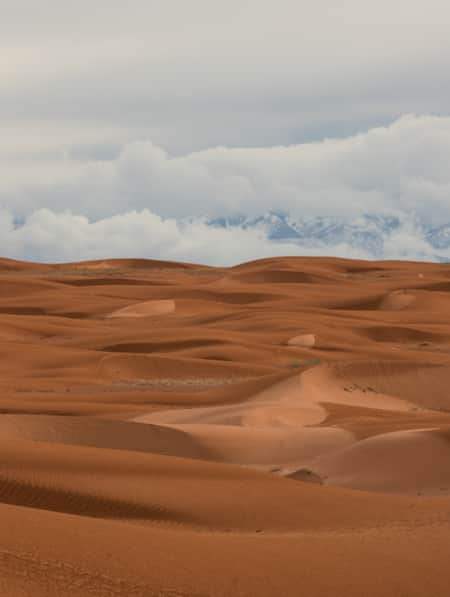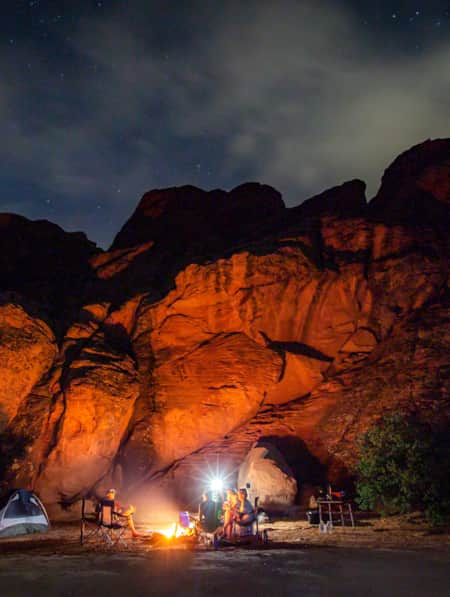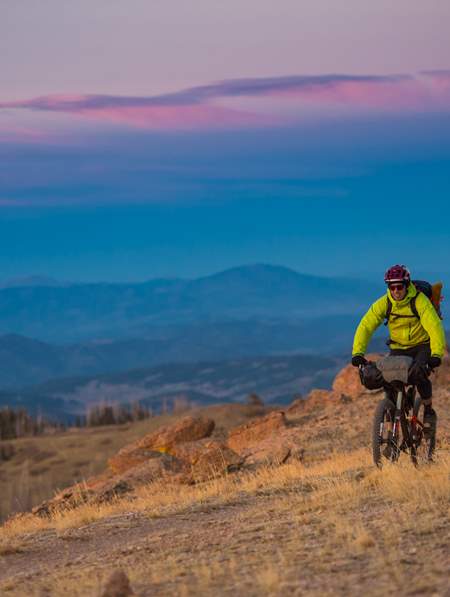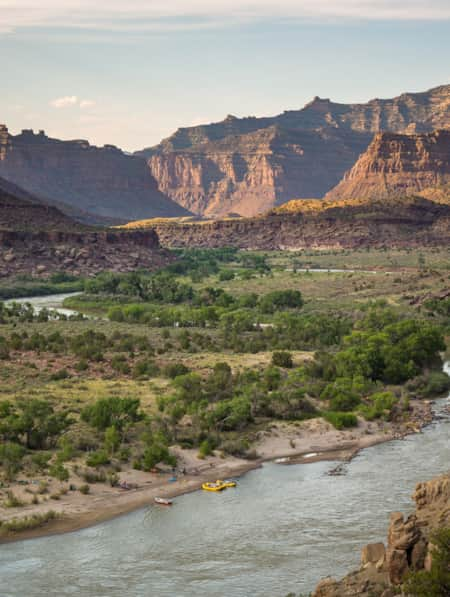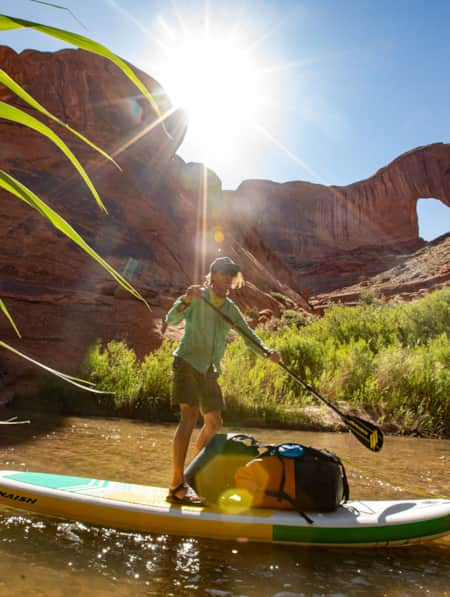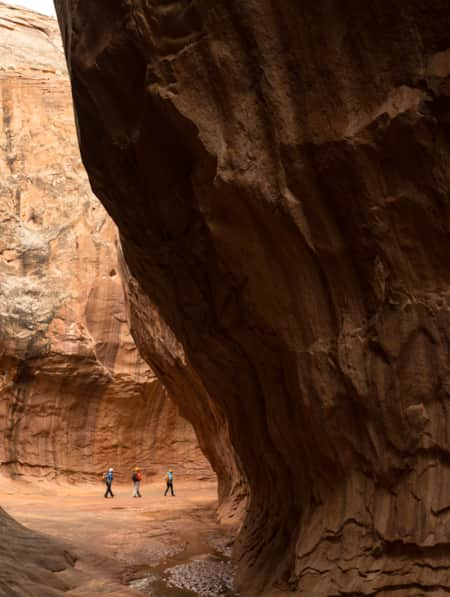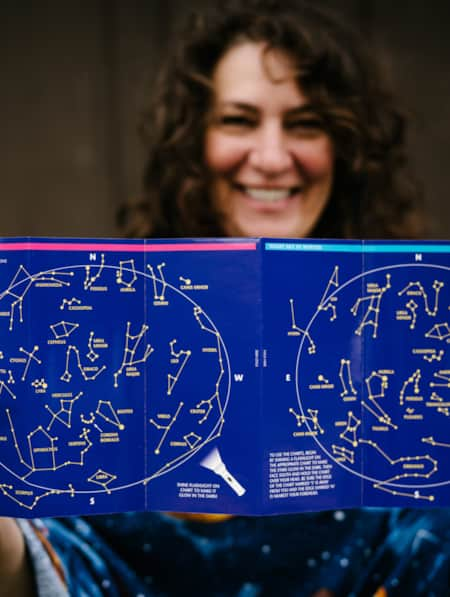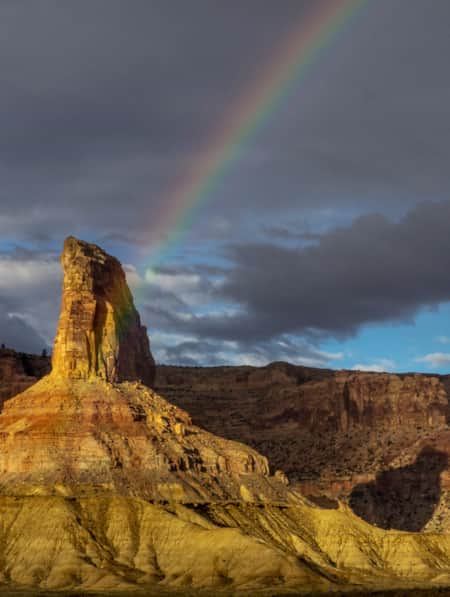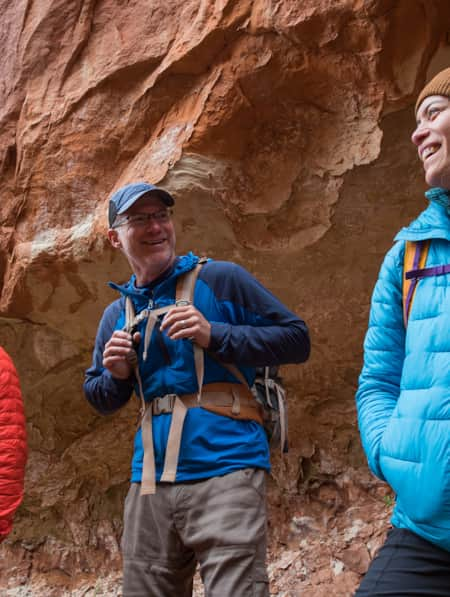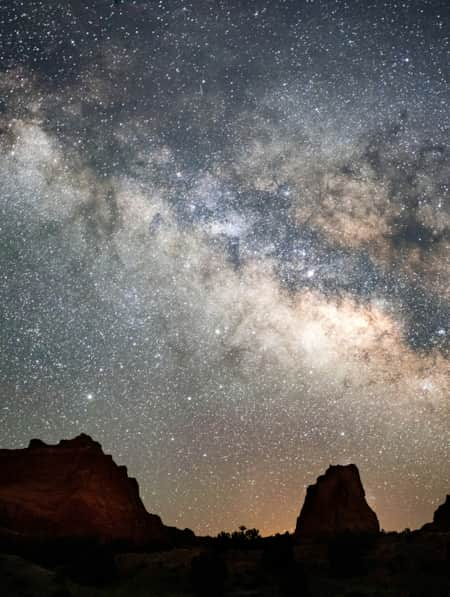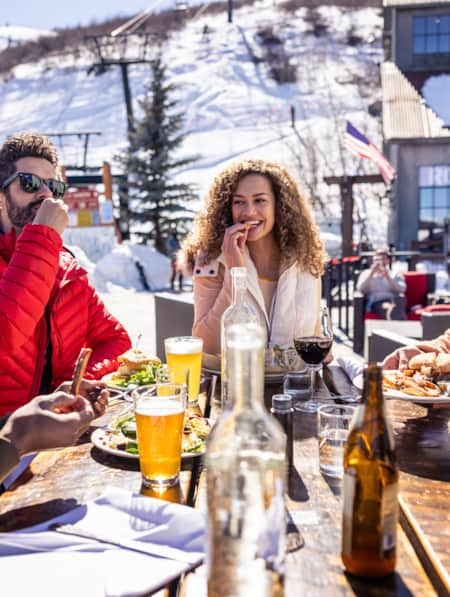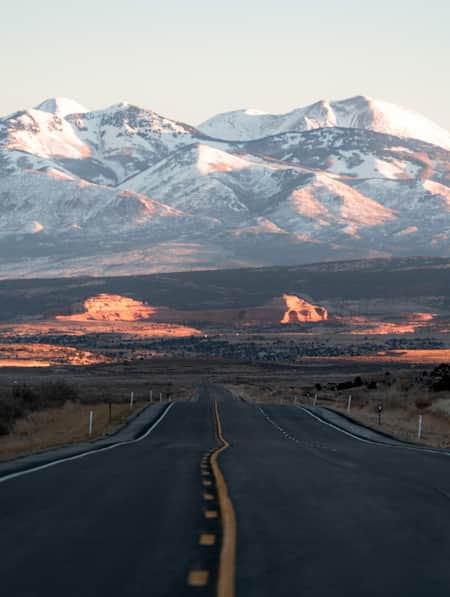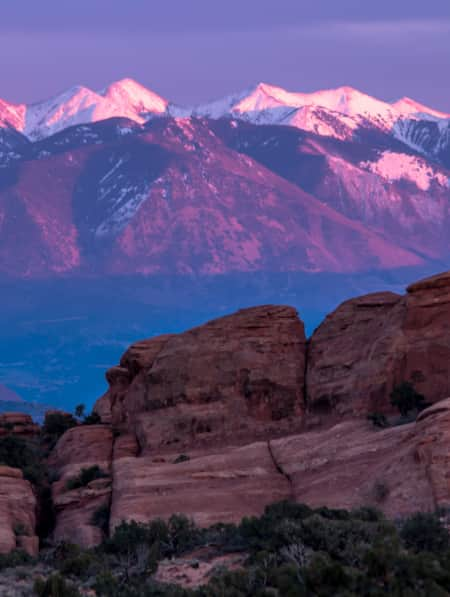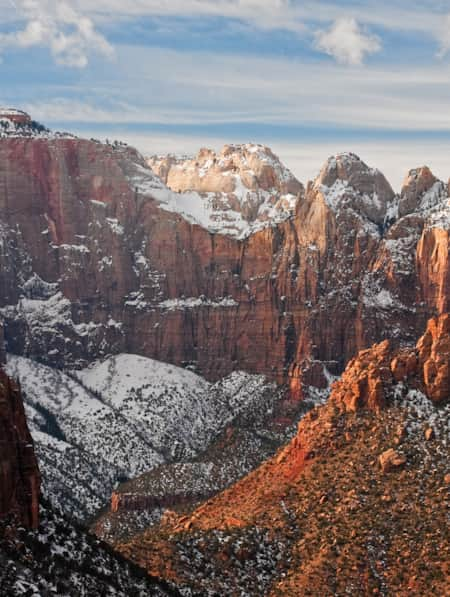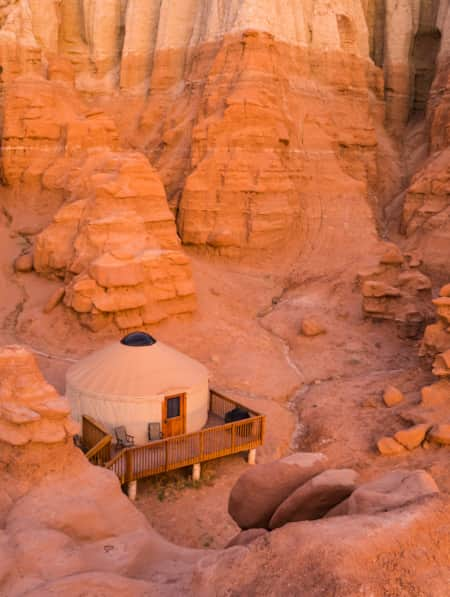A Winter’s Desert: Visiting Southern Utah in the Slow Months
Experiencing the peace of canyon country in the winter is an attraction of its own.
Winter in Utah is usually thought of as a ski haven (and rightly so), but the Southern Utah landscapes are an underappreciated delight. My first visit to the desert in winter was a Christmas family reunion in Monument Valley. As the snow crunched under my boots like a hard shell, I felt peace in the isolation that I hadn’t tapped into during a warmer month’s visit. It might not make sense, but the quiet and stillness is louder than the hustle and bustle of the city. I had “Desert Solitaire” clutched under my jacket to read excerpts during one drive to the next, and as landscapes stretched on for miles with no other person to be seen, I knew that wouldn’t be the last time I chase after desolation.
I know many people share this sentiment, and are drawn to Southern Utah in the winter as they also seek out peace among the sparse vegetation and sprawl of open spaces. Looking across the different formations of land is a way to look into Earth’s distant past, and to grow a connection to how the land operates free from human interaction. Adding the brisk stillness of winter to the formula makes it a rejuvenating retreat.
While hiking and scenic spots can be shoulder-to-shoulder during April to October in the red-rocks of Utah, the off-season carries a special silence to offer a welcome respite from the daily grind. A word of caution: preparation is key, as many roads or ranger stations may be closed during the winter months (Read: How to Visit Southern Utah in Winter). And though the day-time temperatures may be more tame than higher up in the mountains, the desert climate is still extremely cold, and nights can be especially chilling. Be sure to read the “essential gear” list at the end of this article before heading out for your trip.
Snow-shoeing, snowmobiling and even skiing can be enjoyed in the Southern region of Utah, but you can also enjoy scenic car-rides or hike at one of the more popular destinations with a smaller crowd. Read on to find out more about must-visit places in Southern and Central Utah in the winter, and remember throughout your travels to leave nothing but footprints, and take nothing but photos. This way we can protect the landscape and everyone can enjoy the sought-after stillness that Utah deserts bring.
"It might not make sense, but the quiet and stillness is louder than the hustle and bustle of the city."
Near Torrey
Capitol Reef National Park, Scenic Byway 12, and Grand Staircase-Escalante
Located 11 miles from the town of Torrey, Capitol Reef National Park is one of Utah’s best-kept secrets. It’s home to Cassidy Arch (named for Butch Cassidy), one of the few arches that you can walk on (conditions permitting). To reach the arch from the Visitor Center, take Scenic Drive south about 3.5 miles and turn left at the sign for the Grand Wash Trailhead. You’ll drive down a dirt road that sometimes requires 4WD or high-clearance vehicles (check with the Visitor Center for road conditions). After you travel 1.2 miles, you’ll reach the Grand Wash parking area. From there, walk up Grand Wash for less than a mile to reach the well-marked junction with a path that leads to Cassidy Arch.
The hike is rated strenuous, and the approach is exposed at times, so be sure to wear shoes with good grip and watch out for ice patches. The trail is generally well-traveled and marked with cairns. When you reach the arch, take in views of Grand Wash’s red rock walls and the snow-capped arch, which sits at an elevation of 6,450 feet.
From the same trailhead, the Grand Wash Trail offers a less strenuous walk that’s about four miles out and back. You’ll walk through a dry creek bed with towering sandstone walls. Keep an eye out for the enormous dome-shaped rock formation known as Fern’s Nipple. Grand Wash can be accessed from either Scenic Drive side or Highway 24.
Also known as “A Journey Through Time Scenic Byway,” Highway 12 offers a fantastic stretch of views and winding roads through Escalante and Boulder, and is commonly referred to as the All American Road. The highway connects U.S. 89 near Panguitch on the west with S.R. 24 near Torrey on the northeast, and while it isn’t the quickest route between these two points, the journey becomes part of the destination. You can take your time on this highway and break up the trip into a multi-day journey, with some stops along the route to enjoy the distinct geology of Bryce Canyon and Grand-Staircase National Monument.
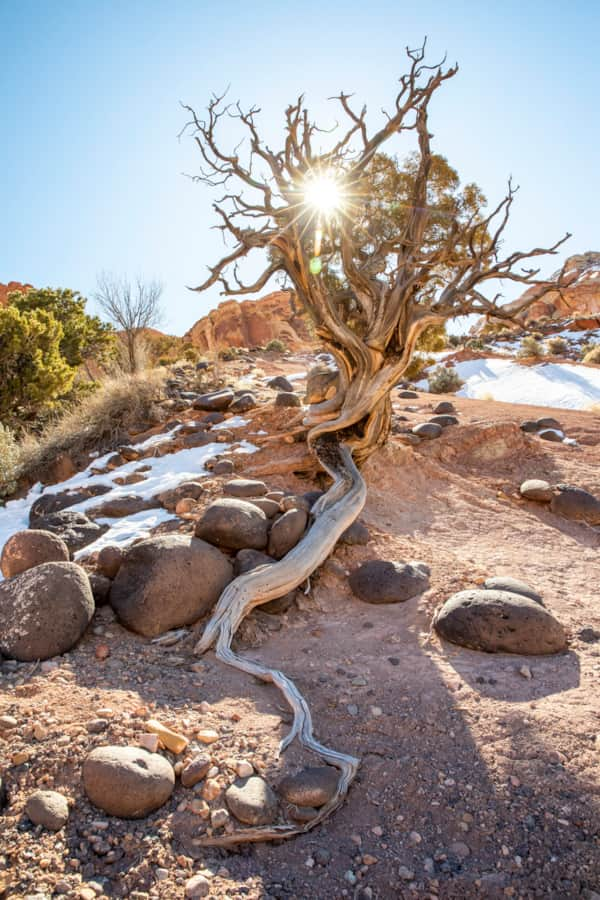
Cohab Canyon Trail in Capitol Reef National Park
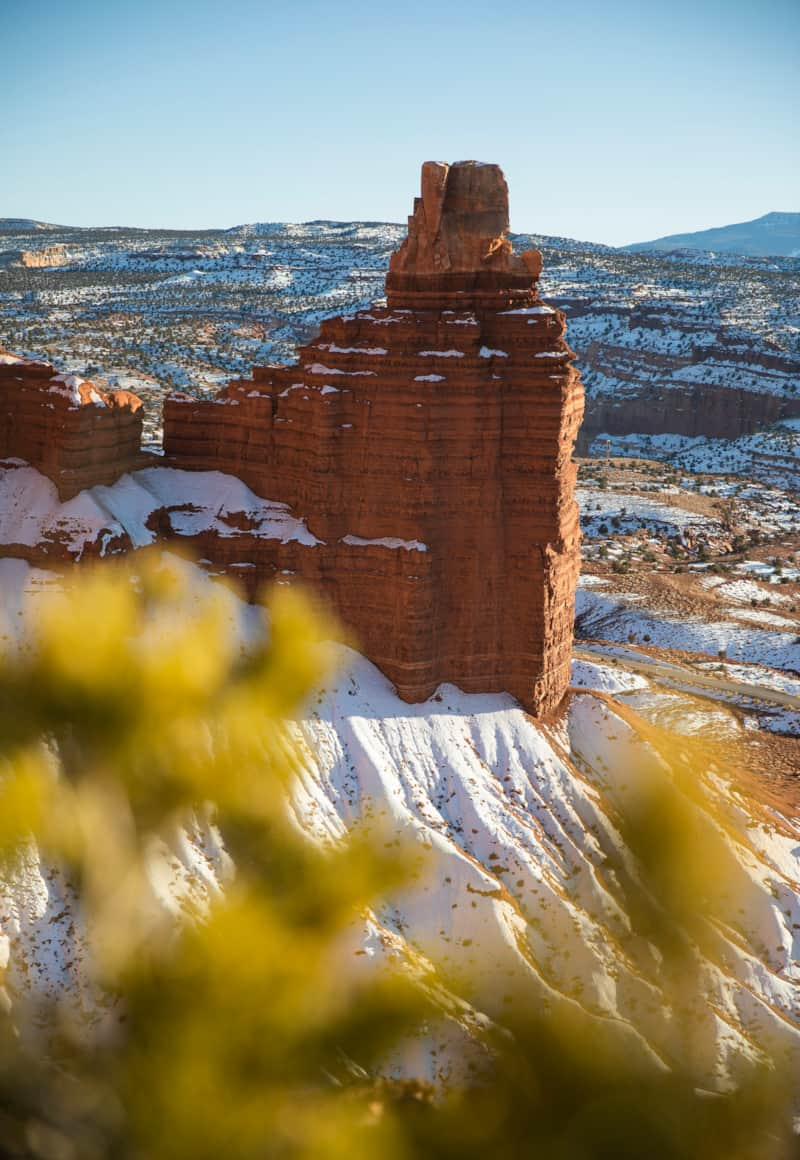
Chimney Rock at Capitol Reef National Park
Near Moab
Canyonlands National Park, Dead Horse Point State Park, and Arches National Park
Traveling to Arches National Park during the winter is a great way to visit the hot spots without dealing with the hassle of long lines of cars or hikers. You can check out the classic Delicate Arch through a short hike or from the view point, or take your time strolling a more moderate hike with assorted arches and rock formations through the Devil’s Garden. (Read: "How to Visit Arches")
The Colorado River Plateau surrounding Moab also includes must-visit spots like the La Sal Mountain range, Dead Horse Point State Park and Canyonlands National Park, with stretches of BLM land between that carries hidden gems. World-renowned mountain-biking can still be enjoyed by winter fiends given the right gear, or you can drive through many scenic roads with viewpoints and easy hikes.
Grand View Point is one such drive, and provides an excellent view of the mountains and gorges of Canyonlands. If you’re up for a short walk, take the half-mile loop trail to visit the impressive Mesa Arch, which sits at the edge of a 500-foot cliff. The arch frames a picture-perfect view of the White Rim country, plus you can see the La Sal Mountains towering in the distance. To extend the scenic drive, add the spur trip to Dead Horse Point State Park. You’ll find overlooks in the park that offer dramatic views of the Colorado River and the White Rim country of Canyonlands. For an added treat, bring blankets and hot drinks and stay for the sunset. (Read: “6 Steps to a Family MBT on Canyonlands White Rim Trail.”)
While Canyonlands National Park is open year-round, the Island in the Sky Visitor Center is your gateway to the most popular section of Canyonlands, which remains open 9 a.m. to 4 p.m. except on major holidays. The Needles Visitor Center closes December to mid-February, but well-prepared adventurers with the right gear can still enjoy trips to this tranquil district.
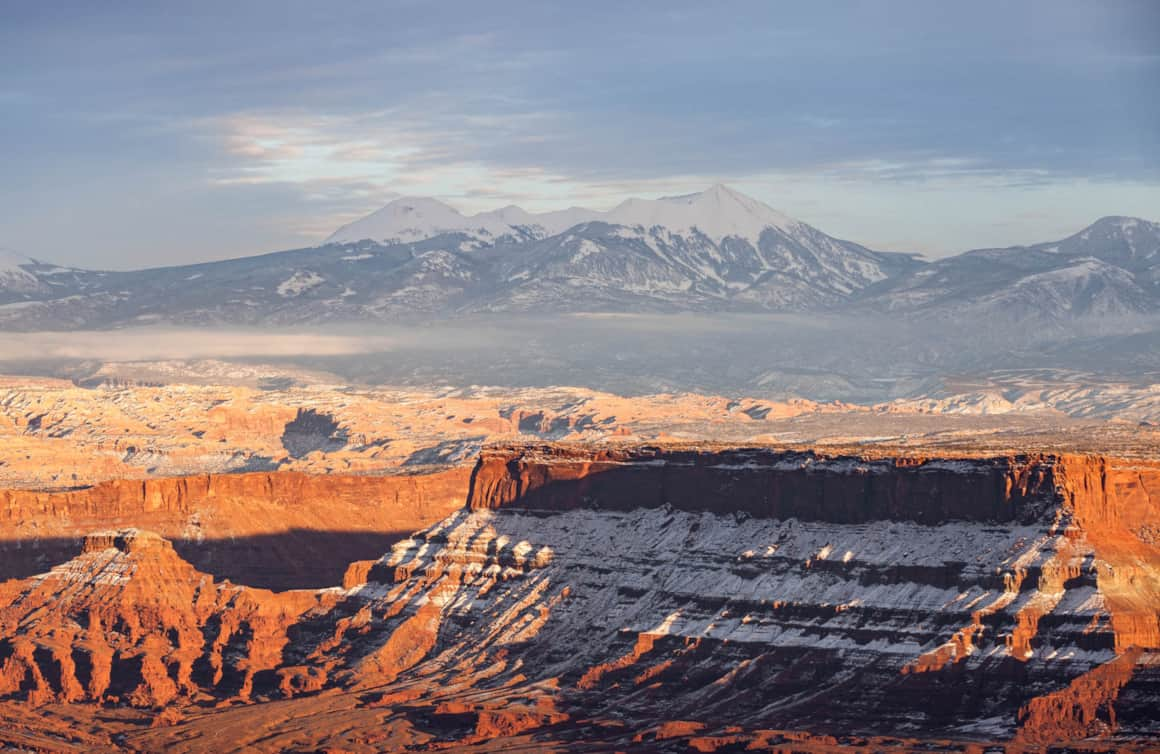
Dead Horse Point State Park
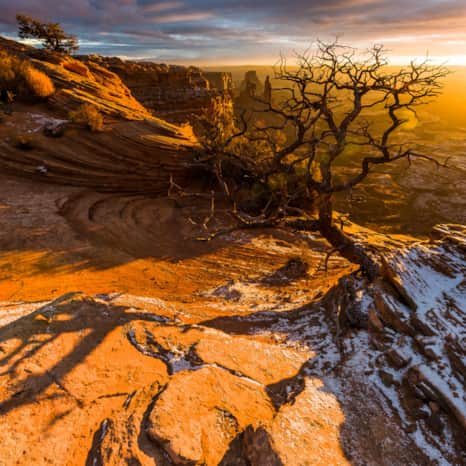
Canyonlands National Park
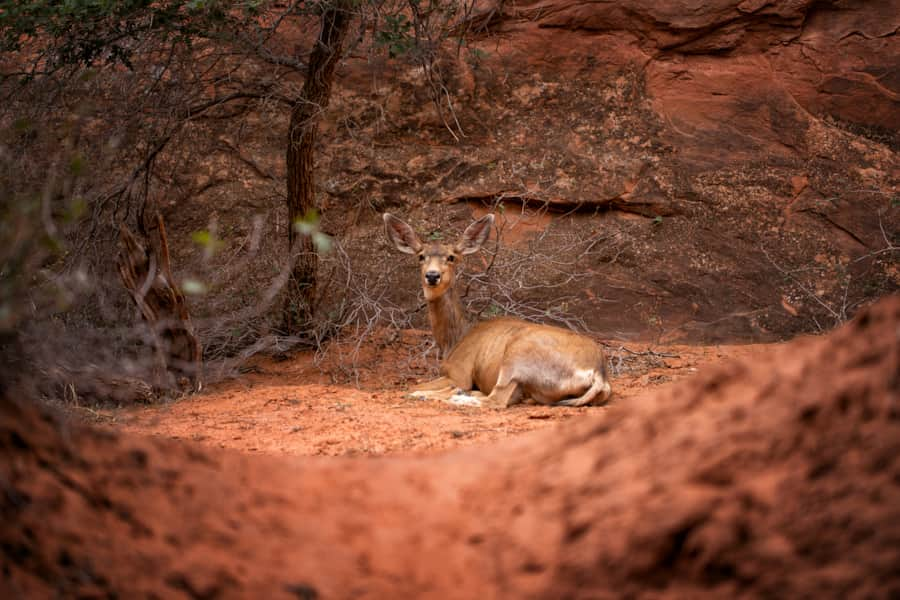
Arches National Park
Near St. George
Zion National Park and Snow Canyon State Park
The famed Zion Canyon in Zion National Park takes on a much quieter persona during the winter months, so accessing popular trails and finding parking when the temperature drops is much easier. While one of the more popular destinations in the summer is The Narrows in Zion Canyon, it’s unlikely to be heavily used in the winter. This deep section of the canyon is a narrow corridor with towering sandstone walls, with a gentle water flow through this section of the Virgin River. In the colder weather, it is best to use a dry suit for this hike.
Established in the 1960s to protect the desert tortoise, Snow Canyon State Park offers a unique perspective just outside of the well-traveled national park a stone's throw away. With a variety of landscape features, this park boasts a diversity of geological features with sand dunes, prehistoric volcanic eruptions, and a wide range of desert flora and fauna. Take a moderate hike through The Three Ponds trail, or enjoy the White Rocks Trail to the Lava Flow Overlook for a day trip.
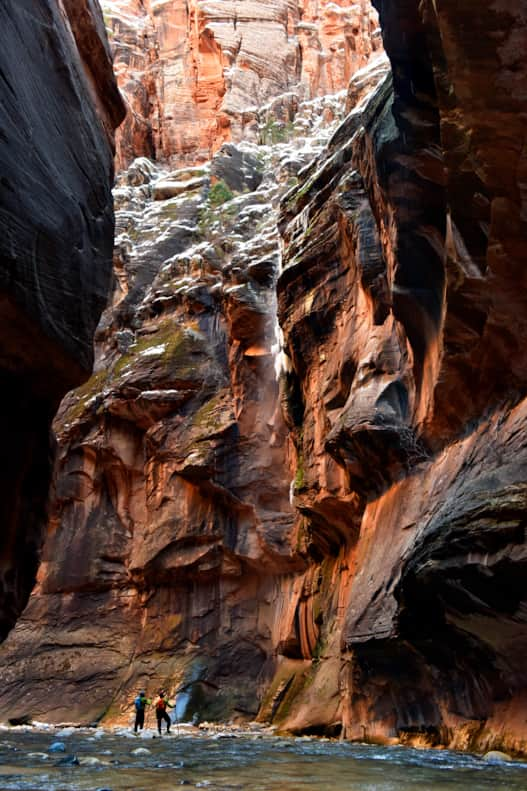
A couple hikes The Narrows in Zion National Park
Photo: Hage Photo
"Like Arches and Canyonlands national parks to the north, Monument Valley showcases eons of nature's erosive power, yet has distinctive formations unlike anywhere else in the world. "
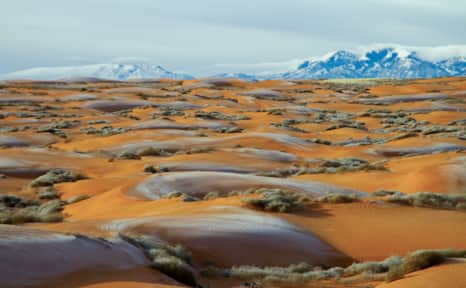
A view of the Henry Mountains from the Robbers Roost area.
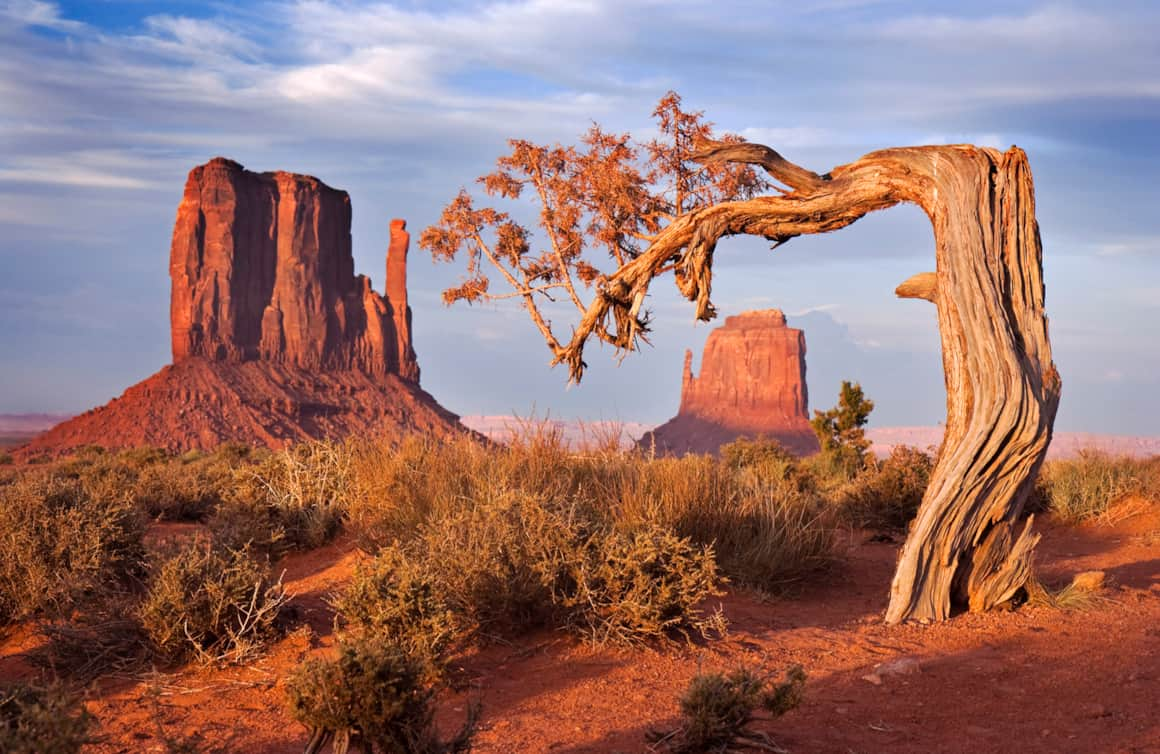
Monument Valley
Near Monticello
Monument Valley, Four Corners and Bears Ears
Learn more about the Indigenous roots of Utah by spending time respectfully on Ancestral Puebloan land. Set aside by the Navajo Tribal Council in 1958, Monument Valley Park covers almost 92,000 acres in northern Arizona and southern Utah and lies within the Navajo Nation reservation. Like Arches and Canyonlands national parks to the north, Monument Valley showcases eons of nature's erosive power, yet has distinctive formations unlike anywhere else in the world. For millions of years, layers upon layers of sediments settled and cemented in the basin. The basin lifted up and became a plateau; then the natural forces of water and wind slowly removed the softer materials and exposed the spires, buttes, and other formations we see today—some of which you may recognize from many Western films.
Goulding's Resort and Tours offers guided trips to the surrounding areas such as Tear Drop Arch, as well as access to their lodging, restaurant, grocery store, convenience store, museum and theater.
You can also take another trip by car through the Trail of the Ancients Scenic Byway, which connects Monument Valley to Bears Ears, to round out your journey and catch some of the most iconic mesas and views the state has to offer. With both archeological and cultural sights to catch along the way, you’ll enjoy the breath-taking vistas as you wind through the iconic Moki Dugway, and pass through other noteworthy attractions such as the Edge of the Cedars State Park and Museum, Natural Bridges National Monument, and Hovenweep National Monument.
Stopping to appreciate the rhythms of this ancient, sacred land has the ability to change your perspective if you take the time to let it.
"Stopping to appreciate the rhythms of this ancient, sacred land has the ability to change your perspective if you take the time to let it."
Near Cedar City
Cedar Breaks National Monument
Hidden within the mountains above Cedar City is the brilliant geology and vibrant environment of Cedar Breaks National Monument. The natural formation made of eroding limestone, shale, and sandstone is home to hiking trails, ancient trees, high elevation camping, and over-the-top views along the “Circle of Painted Cliffs.” The Amphitheater is like a naturally formed coliseum that plunges 2,000 feet below.
There is a plowed parking area at the junction of Highway 143 and Highway 148. From the parking lot, it’s an easy 5-minute snowshoe to the rim of the amphitheater. Approach the rim with caution, because it’s not maintained during the winter and there can be sheer cliffs. The National Park Service recommends staying at least 200 feet from the rim.
From the edge, you’ll see a beautiful landscape of spires, hoodoos, and cliffs tinted with shades of red and orange. During winter, brilliant snow caps the rust-colored peaks creating a striking contrast in colors. Situated on the western edge of the Markagunt Plateau, the raised area of earth located in Southern Utah sits entirely above 10,000 feet.
To explore the area further, don your skis or snowshoes and make your way down Scenic Byway 148. In the winter, it’s closed to vehicle traffic and becomes a groomed snow trail that runs for several miles along the rim of the park. From January through March, volunteers lead guided snowshoe hikes, and you can check online or contact the park for specific dates. The area is also popular for snowmobiling, and Cedar Breaks is one of the few national monuments that allows people to ride unguided. (There are restrictions, however, and you can find the rules here.) If you would like a guided tour, Thunder Mountain Motorsports offers excellent trips to the region for snowmobilers of all abilities.
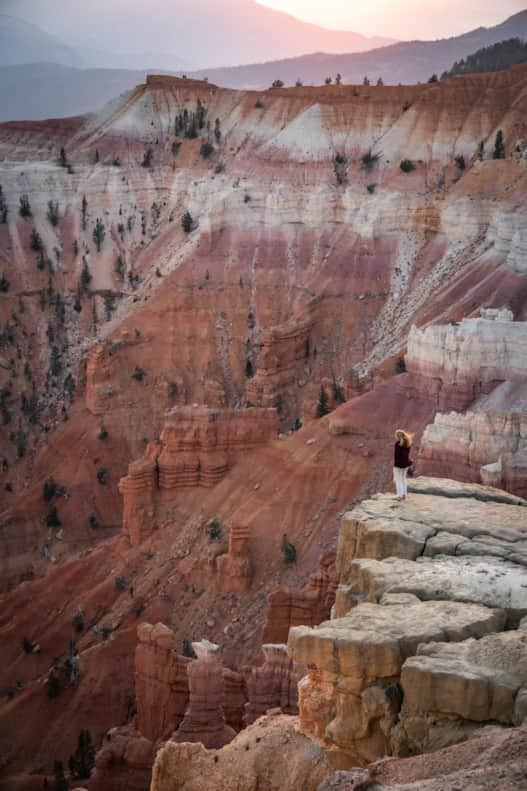
Cedar Breaks National Monument
Photo: Jay Dash
More in this series
-

Gravity and Water: Mark Making in a Winter’s Desert with Anne Kaferle
Finding Helper at a time when she “needed it the most,” landscape artist Anne Kaferle has put down roots in Utah, thanks to plein-air painting and the healing power of time alone in the landscape.
-

Meet the Women Fostering the Arts in Central Utah
Women lead the way in Utah’s regional art galleries and exhibitions.
What's Nearby
-
Cedar City
There are plenty of things to experience in Cedar City, Utah thanks to nearby ski resorts, a national forest, great national parks and a superb arts scene.
-
Moab
Moab is surrounded by a sea of buckled, twisted and worn sandstone sculpted by millennia of sun, wind and rain
-
Monticello
The southeastern Utah town of Monticello lies on the sheltered eastern slope of the Abajo Mountains, overlooking a maze of sandstone canyons and plateaus.
-
St. George
St. George is perfect for family adventures, luxury spas, extensive shopping, championship golf and nearby outdoor recreation assets.
-
Torrey
Torrey's proximity to Capitol Reef National Park, the mountains of Fishlake and Dixie National Forests, Scenic Byway 12: Utah's All-American Road, sublime desert landscapes to trout-filled alpine lakes, make Torrey an outdoor lover's perfect hub for some of the most spectacular scenery and outdoor recreation opportunities in the state.
